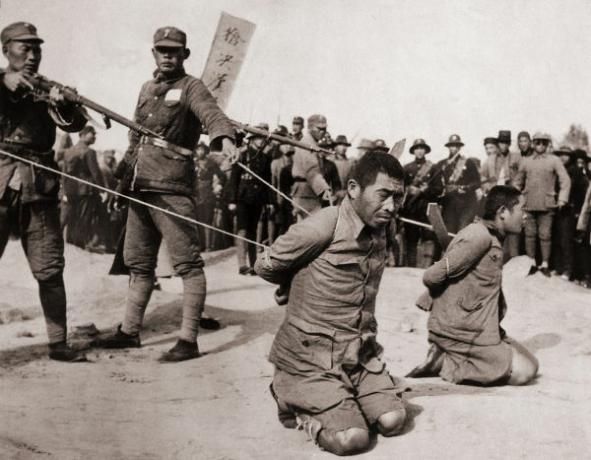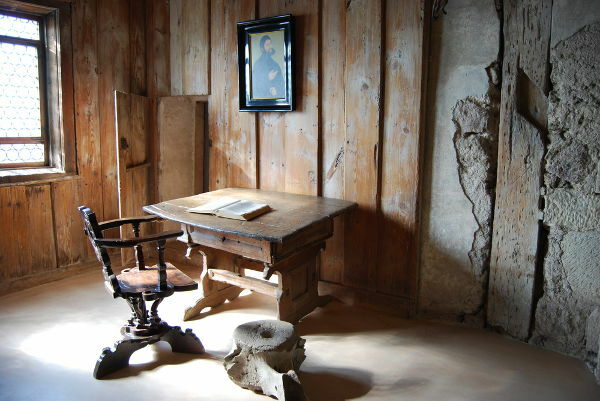THE Second Sino-Japanese War was a conflict between China and Japan that started in 1937 from the Marco Polo Bridge Incident. This dispute continued until 1945, when Japan unconditionally surrendered to the allies after the release of two atomic bombs (China made up the Allies along with USA, USSR and UK). A feature of this war was the extreme savagery of the Japanese against the Chinese (military and civilian). After eight years of conflict, the result was about 20 million deaths, of which approximately 18 million were Chinese.
background
China has been the target of Japanese imperialist expansion since the second half of the 19th century. From the Meiji Restoration From 1868, Japan underwent major modernization and economic development. China, on the contrary, went through a period of great instability, mainly because of the interference of the European powers in the country.
As Japan strengthened economically and militarily, imperialist sentiments began to develop in the country. Thus, neighboring and weakened China became the target of Japanese ambition. In this context, some wars were fought by Japan to guarantee control over originally Chinese territories.
The first major incident to be recorded was the First war sinno-japonesse(1894-1895), in which Japan and China disputed control, mainly, of the Korean Peninsula. The Japanese victory guaranteed the country total control over the Korean peninsula, in addition to the possession of other territories and the imposition of heavy war compensation on China.
Shortly thereafter, Japan was in another war for control of territories in China, but this time, the conflict was against Russia in the call War russo-japonesse. Then there was the dispute for control of Port Arthur and the Liaotung Peninsula (part of Manchuria). Japan again won and reaffirmed its dominance over several Chinese territories.
The victory in these two wars, combined with an unhealthy nationalism and an extensive indoctrination instituted in the Japanese education, created a favorable climate for new ambitions in the neighboring country throughout the 1910s and 1920. All of this made the Japanese believe in a civilizing mission in China, when, in fact, they were solely and exclusively motivated by economic interests.
In the 1930s, two incidents highlighted the Japanese aggressive stance towards China. In 1931, the Mukden incident,in which a forged attack on a Japanese railway was used as an excuse for Japan to invade Manchuria and create the puppet state of Manchukuo. Apparently, this state created by Japan was independent. However, as all actions in this territory were determined by Japanese interests, it was considered a puppet state of Japan.
The war between the two nations officially began in 1937, after the Marco Polo Bridge Incident, in which Chinese and Japanese troops present in that place fell out and started a confrontation with each other. As the issue was not resolved diplomatically, Japan responded by attacking China.
Do not stop now... There's more after the advertising ;)
Japanese war and violence
The Second Sino-Japanese War was first marked by the brutality of the Japanese army in relation to the Chinese, since the former turned violently and indiscriminately against civilians and the military. Furthermore, a second feature of this conflict was the inability of Chinese armies to organize a effective resistance against enemy armies, which would have greatly irritated the Americans when they entered the conflict in 1941.
In 1937, Japan quickly advanced over part of the coast and secured control of Beijing and Ink, two large Chinese cities. In Nanjing, the incident took place that was marked by institutionalized brutality in the Japanese army during this period of wars: the Nanjing rape.

Execution of Chinese Prisoners during the Second Sino-Japanese War
The rape of Nanjing took place between 1937 and 1938 when Japanese troops invaded the city of Nanjing and imposed a veritable massacre on the local population. In addition, there were mass rapes across the city – historians estimate that around 20 thousand women have been raped, including children. The massacre of civilians in Nanjing could have claimed 300,000 deaths.
The indiscriminate execution and rape of civilians not only took place in Nanjing, but was a common practice in the Japanese army throughout the war. Another evidence of Japanese brutality was the Unit 731, a secret unit created with the intention of carrying out biological tests on Chinese prisoners. As Max Hastings records, in Unit 731:
Thousands of captured Chinese were murdered in tests carried out at the unit's base near Harbin, many undergoing vivisection without the benefit of anesthetics. Some victims were tied to stakes so that anthrax bombs could be detonated around them. Women were infected with syphilis in the laboratory; civilians in the region were kidnapped and injected with deadly viruses.|1|.
This excerpt is just a small sampling of the atrocities committed in Unit 731 against Chinese during the Second Sino-Japanese War.
The end of the war
China had American support in the war after the United States was attacked by the Japanese in pearl harbor, in 1941. The Americans provided arms and supplies to Chinese armies, mainly to the group of nationalists led by Chiang Kai-shek. The Second Sino-Japanese War did not end until 1945, when Japan surrendered to the Allies after suffering attacks with two atomic bombs in August of that year. Many of those responsible for atrocities in China have been tried by the Allies in the International Military Tribunal for the Far East.
|1| HASTINGS, Max. The world at war 1939-1945. Rio de Janeiro: Intrinsic, 2012, p. 448.
by Daniel Neves
Graduated in History



